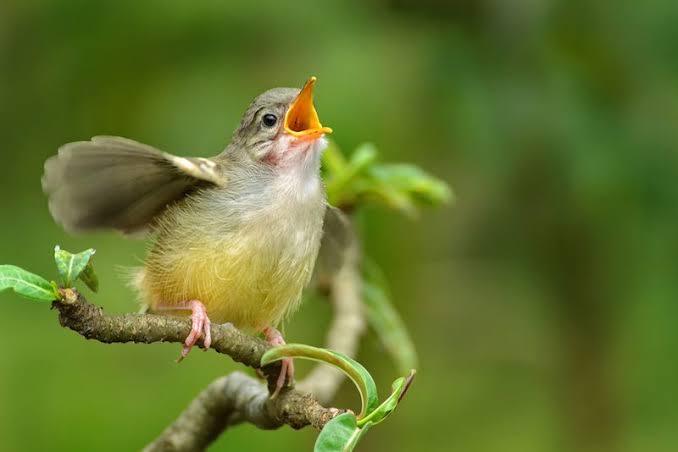To Kill a Singing Bird

” … ???? ???’? ?? ??? ????? ??? ???? ????? ?????? ??? ??? ??. ????’? ??? ?? ?? ? ??? ?? ???? ? ???????????.”
??
Yashovardhan Sinha
In my growing up years I had heard stories about jalsas and some famous tawaifs of Gaya but had only a vague notion of who or what these tawaifs were. Were they artists who composed poetry, sang light classical songs and performed the kathak as we saw in movies? Or were they just glamorised prostitutes as we saw in other movies?
I recently chanced upon a book – Tawaifnama- by Saba Dewan that answers this question at great length and fills an important gap in our understanding of our socio-cultural history as the author takes us through the story of tawaifs from Banaras and its cultural hinterland of eastern Uttar Pradesh and western Bihar, from the early nineteenth century to the present.
Sex did form part of a tawaif’s life, but it did not define it. What actually defined it was music and tehzeeb. Bharatendu Harishchandra, who is considered the ‘the father of modern Hindi’, declared that he visited tawaifs regularly to acquire and cultivate a knowledge of the arts.
A tawaif’s training began when she was just a child – every day for 8 to 10 hours. The ustads freely resorted to corporal punishments. And this training continued till she reached the mid-teens when she was considered ready to be launched.
Music and dance were just one part of the intensive education she received. Mastery of the letters too was considered an important aspect of her learning process. The “syllabus” of a tawaif’s training included “the elaborate social courtesies associated with the kotha: the deep lowering of the neck and shoulders, accompanied by the salute of the adaab, the making and folding of paan and presenting it gracefully to guests, the witty repartee and amusing conversation during interludes in the performance” etc.
In a formal performance, a tawaif would enact through facial expressions, hand gestures and dance movements each line of bandish thumri, ghazal or other song type she sang. This performance in its entirety was called mujra.
The kotha’s prestige attracted to it well-known male musicians, poets and other members of the literati, thus marking it as a musical and cultural institution.
Respected and popular as artists and sought after as lovers, many tawaifs enjoyed high prestige and considerable wealth. And by and large, tawaifs were responsible for the material well-being of a large circle of people that included her ustad, accompanists, immediate family living with her as well as her extended family back in her village/ hometown.
Sadly, this rich cultural tapestry began to shred by the end of the 19th century, first when the British colonialists tried to enforce their Victorian narrow-mindedness in our society and soon thereafter by our nationalist leaders who considered the tawaif and her art as signs of cultural degeneration brought about by the Mughals. Classical music purists too joined the bandwagon. Tawaifs were popular for their thumris, dadras, kajris, chaitis, ghazals etc. Purists found this form of music vulgar and an insult to our ancient musical tradition.
Things got only worse for the tawaif with the advent of Gandhiji on the scene. To quote Ms Dewan- “In the age of Gandhian non-cooperation, tawaifs were increasingly finding themselves at the receiving end of their urban patrons’ growing moral rectitude. As values of thrift, sobriety and abstinence became inextricably linked with national interest, aristocratic patrons of tawaifs in Banaras, who had earlier resisted moralists’ attempts to police private musical soirees, now began to discontinue the practice of their own accord.”
With the kotha being ignored by the rich and the famous, and even jalsas and mehfils at the houses of zamindars and merchants drying up, the gramophone and radio provided a life-line to many of them. But soon the moralists got to the radio-station too.
In the 1946 ministry of Jawaharlal Nehru, Sardar Patel was minister in charge of Home Affairs as well as Information and Broadcasting. Among the very first decisions that he took was to ban those musicians ‘whose private life was a public scandal’ from performing on the radio.
This prudish rule left AIR with almost no women Hindustani musicians. But it also left these musicians without their sole source of income. Many of them married any willing accompanist just to get a marriage certificate that they could produce at the radio station to gain acceptability. (Even then, they were disallowed from using the main entrance of the building through which ladies from “respectable” families came and had to sneak in through a back or side door.) Others tried to eke out a living by teaching foreign tourists who came to Benares to “discover India”. And, sadly, several were left with no choice but to sink into prostitution.
There may have been evils attached to the kotha but its rich cultural traditions ought to have been cherished and encouraged. Instead, we allowed it to be destroyed and now the cultured kothas of Benares, Lucknow, Gaya and Muzaffarpur have yielded place to the raunchy dance bars of the metros.
Since we are in the midst of the rainy season, let me sign off by giving you a sample of the kind music tawaifs excelled in; enjoy this kajri sung by Rasoolan Bai, one of the most famous tawaifs of Benares.
.




